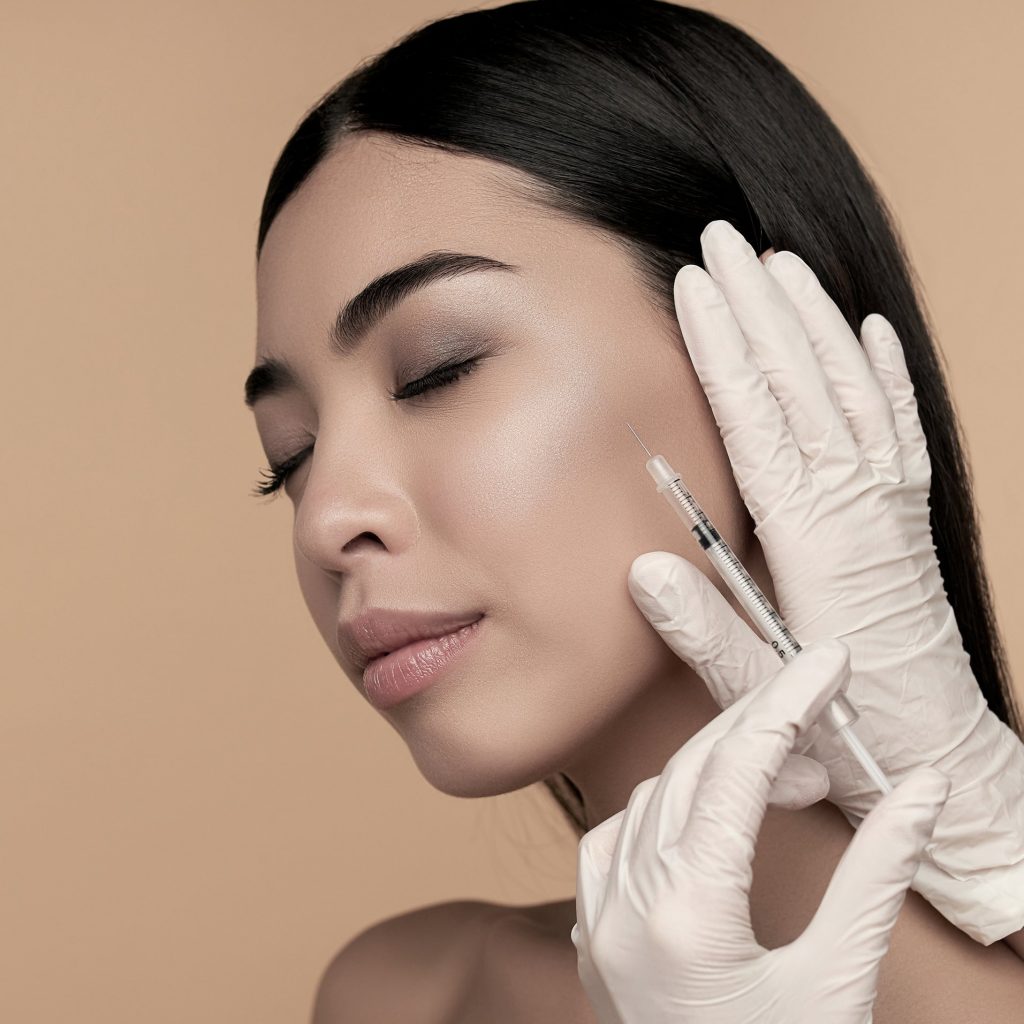Did you know that over 2.6 million people in the U.S. received injectable fillers last year? These popular treatments enhance facial features and restore volume. However, many don’t realize the impact of sun exposure on their results. Sunlight can break down the fillers used in cosmetic injections faster, leading to shorter-lasting effects in skin care and cosmetic dermatology like botox.
Protecting your skin is crucial after getting these injections. Sunscreen is your best friend. It helps maintain that youthful glow and prolongs the benefits of fillers. Understanding the relationship between injectable fillers and sun exposure, especially at the beach while wearing a hat, can make a big difference in your skincare routine. Prioritize protection for lasting beauty and confidence.
Key Takeaways
-
Understand that injectable fillers can be affected by sun exposure, which may impact their longevity and effectiveness.
-
Always apply sunscreen with a high SPF to protect your skin and the area where fillers were injected.
-
Avoid direct sun exposure for at least two weeks after receiving fillers to ensure the best results.
-
Stay informed about activities that could expose your skin to UV rays, such as swimming or sunbathing, after filler treatments.
-
Consider using protective clothing or hats when spending time outdoors to shield your skin from harmful UV rays.
-
Consult with your healthcare provider about personalized sun safety tips after getting dermal fillers for optimal care.
Understanding Injectable Fillers
Definition
Injectable fillers are substances used in aesthetic medicine procedures to restore volume and smooth out wrinkles, like a hat. These materials can help enhance facial contours and provide a youthful appearance. They fill in areas that have lost volume due to aging or other factors.
Common Uses
Fillers have become popular in cosmetic procedures for facial rejuvenation. Many people seek these treatments, like facial fillers and popular dermal fillers, to improve their looks without undergoing surgery, including lip filler. Filler injections can be used on various parts of the face, including cheeks, lips, and under the eyes.
Lip fillers are particularly common. They add volume to thin lips with facial fillers and create a more defined shape through dermal fillers and facial filler treatments. Cosmetic injectables also help reduce lines around the mouth, giving a smoother look.
Temporary Nature
Most fillers are temporary. They usually last from six months to two years, depending on the type used. This means individuals need periodic maintenance to keep their results. Regular touch-ups can help maintain the desired look over time.
e popular fillers include hyaluronic acid-based products like Juvederm and Restylane. These fillers provide immediate results but will gradually dissolve in the body. Other types, such as collagen-based fillers, may require allergy testing before use.
Considerations and Risks
Injectable fillers come with some risks. Side effects may include swelling, bruising, or redness at injection sites. Rarely, individuals may experience more severe complications. It is essential to consult with a qualified professional before getting filler injections.
Sun exposure can also impact the longevity of fillers. UV rays can break down certain types of injectables faster. Therefore, protecting treated areas from sun exposure is crucial after receiving injections.
Popular Areas for Treatment
Common injection sites for lip fillers include the vermilion border and Cupid’s bow. These areas benefit from added volume and contouring for a fuller lip appearance. Other popular filler sites include:
-
Cheeks
-
Nasolabial folds
-
Forehead lines
-
Tear troughs
Each site requires specific techniques to achieve natural-looking results.
Composition of Dermal Fillers
Hyaluronic Acid
Hyaluronic acid serves as a primary component in many dermal fillers. This substance naturally occurs in the body. It helps retain moisture and provides volume to the skin.
Hyaluronic acid dermal fillers are popular for their ability to hydrate skin effectively. These fillers can add fullness to areas like the cheeks and lips. They also help reduce the appearance of wrinkles. When injected, hyaluronic acid acts quickly, providing immediate results.
Other Ingredients
Besides hyaluronic acid, other ingredients are found in various facial fillers. Calcium hydroxylapatite is one such ingredient. It is a mineral-like compound that stimulates collagen production. This filler tends to last longer than hyaluronic acid fillers.
Poly-L-lactic acid is another ingredient used in some dermal fillers. It works gradually by stimulating collagen growth over time. Patients often notice improvements after several weeks of treatment. This type of filler is ideal for those looking for long-lasting results.
Longevity and Effect
The composition of dermal fillers greatly affects their longevity and overall effect. Hyaluronic acid fillers typically last six months to a year. Their effects diminish as the body absorbs the hyaluronic acid.
Fillers containing calcium hydroxylapatite can last up to 18 months. The longer duration is due to its thicker consistency and ability to stimulate collagen production.
Poly-L-lactic acid fillers can last even longer, sometimes up to two years. However, these require multiple sessions for optimal results. Patients should discuss their options with a qualified professional to determine what suits them best.
Understanding the different compositions helps patients make informed choices about facial fillers. Each type of filler offers unique benefits and varies in how long they last.
Dermal Filler Application Process
Consultation
A dermal filler appointment begins with a consultation. During this meeting, the practitioner assesses the patient’s skin and discusses goals. They review medical history and any previous cosmetic treatments. This step is crucial for determining the right cosmetic treatment options.
After discussing expectations, the professional explains the procedure. Patients should ask questions about the aesthetic injection treatment. Understanding potential risks and side effects is essential. This transparency helps build trust between the patient and practitioner.
Preparation
Once both parties agree on the treatment plan, preparation starts. The practitioner cleans the treatment area thoroughly. Some may apply a topical anesthetic to minimize discomfort during facial injections. This process usually takes about 15 to 30 minutes.
Patients should avoid blood thinners before their appointments. Medications like aspirin or ibuprofen can increase bruising risk. Following pre-treatment instructions ensures a smoother experience.
Injection Technique
The actual dermal filler injections take place next. Practitioners use a fine needle or cannula for precise application. They often target specific areas like lips, cheeks, or nasolabial folds. Each area requires different techniques based on desired outcomes.
For lip filler treatment, practitioners typically inject in small amounts for natural results. In contrast, cheek fillers may require deeper injections for volume restoration. The technique varies depending on the type of filler used.
Practitioners also consider facial anatomy during injections. Understanding muscle movements and skin elasticity helps achieve better results. This knowledge ensures that fillers enhance natural beauty without looking overdone.
Post-Treatment Care
After facial filler treatments, patients receive aftercare instructions. Swelling and bruising are common but usually subside within a week. Practitioners advise avoiding sun exposure immediately after treatment to prevent complications.
Patients should monitor their reactions closely in the days following the procedure. If significant swelling or pain occurs, contacting the provider is vital.
Choosing a Qualified Professional
Selecting a qualified professional is critical for dermal filler treatments. Look for licensed practitioners with experience in cosmetic dermatology. Check their credentials and reviews from previous clients.
A skilled injector understands facial anatomy and has a good eye for aesthetics. They can create natural-looking results, reducing the risk of complications. Always prioritize safety over cost when choosing where to have aesthetic medicine procedures performed.
Sun’s Impact on Filler Longevity
UV Rays Breakdown
UV rays from the sun can harm the skin. They penetrate deeply and accelerate the breakdown of hyaluronic acid found in injectable fillers. This process can reduce the filler longevity significantly. Studies show that prolonged sun exposure can lead to faster degradation of these substances.
Hyaluronic acid is crucial for maintaining volume and hydration in the skin. When it breaks down quickly, fillers lose their effectiveness sooner than expected. Therefore, individuals who frequently expose their skin to sunlight may notice that their fillers do not last as long.

Inflammation Effects
Sun exposure can also trigger inflammation in the skin. This inflammation occurs due to the body’s response to UV damage. It can affect how well fillers settle into the skin. Swelling or redness can distort the results of filler treatments.
Inflammation may lead to uneven texture or an unnatural appearance. This is especially true if someone has recently undergone a filler procedure. The presence of inflammation can compromise the aesthetic goals intended by the treatment.
Importance of Sun Protection
Using sun protection is vital for maintaining filler effectiveness. Sunscreen acts as a barrier against harmful UV rays. Applying a broad-spectrum sunscreen with at least SPF 30 daily helps shield the skin from damage.
Reapplying sunscreen every two hours during sun exposure is essential. Wearing protective clothing and seeking shade can further enhance protection. These measures help preserve the integrity of fillers and prolong their effects.
e dermatologists recommend using products containing antioxidants. Ingredients like Vitamin C can help combat oxidative stress caused by sun exposure. This approach supports healthier skin and better filler longevity.
Summary of Recommendations
-
Apply broad-spectrum sunscreen daily.
-
Reapply every two hours when outdoors.
-
Wear protective clothing such as hats and sunglasses.
-
Seek shade during peak sun hours (10 AM – 4 PM).
-
Consider antioxidant-rich skincare products.
In summary, understanding how sun exposure impacts filler longevity is crucial for those considering or having received injectable fillers. Protecting the skin from UV rays helps maintain results and prolongs the life of treatments.
Factors Reducing Filler Durability
Lifestyle Choices
Smoking significantly impacts filler degradation. The chemicals in cigarettes reduce blood flow. Poor circulation affects skin health and filler longevity.
Excessive sun exposure also plays a role. UV rays break down hyaluronic acid faster. This leads to a shorter lifespan for fillers. Regular sunscreen use is essential. It protects the skin and helps maintain results.
Skin Type
Skin type can influence how long fillers last. Oily skin may break down fillers quicker than dry skin. This is due to higher oil production, which can lead to faster degradation.
People with sensitive skin might experience more swelling or bruising after injections. This can affect how long the filler remains effective. Different skin types require tailored care.
Metabolism Effects
Metabolism affects how quickly the body processes fillers. Individuals with a fast metabolism may notice fillers fading sooner. Their bodies break down substances more rapidly.
Conversely, those with a slower metabolism might enjoy longer-lasting results. Each person’s unique metabolic rate plays a crucial role in filler durability.
Post-Procedure Care
Following post-procedure care instructions is vital for extending filler life. Avoiding strenuous exercise for 24 hours helps prevent swelling and bruising. This allows the filler to settle properly.
Staying hydrated also supports the health of the skin and fillers. Drinking plenty of water keeps the skin plump and reduces the risk of hyaluronic acid degradation.
Avoiding direct sun exposure for at least two weeks after treatment is important. This minimizes damage from UV rays, promoting better results.
Summary of Key Factors
-
Lifestyle choices like smoking and sun exposure reduce filler durability.
-
Skin type influences how quickly fillers degrade.
-
Metabolism rates determine how long fillers last.
-
Adhering to post-care instructions enhances filler longevity.
Understanding these factors helps individuals make informed decisions about their treatments. Proper care and lifestyle adjustments can lead to better, longer-lasting results from injectable fillers.
Sun Safety After Fillers
Indoor Rest
Staying indoors is crucial after receiving injectable fillers. This recommendation lasts for at least one week post-treatment. The skin needs time to heal and recover. Avoiding direct sun exposure during this period helps prevent complications. Staying in shaded areas can also reduce the risk of irritation.
Sunscreen Use
Using a high-SPF sunscreen is essential when going outdoors. A sunscreen with SPF 30 or higher provides better protection against harmful UV rays. Apply it generously on all exposed skin, especially the treated areas. Reapply every two hours or more frequently if swimming or sweating. Protective clothing can further shield the skin from sun damage. Wearing a wide-brimmed hat offers additional protection for the face and neck.
Short Durations
Limiting sun exposure is vital, even with sunscreen. Short durations outside are safer for the skin’s recovery process. Direct sunlight can still harm the skin after fillers, leading to unwanted side effects. If you must be outside, try to do so during early morning or late afternoon hours when the sun is less intense.
Skin Care Routine
Maintaining a gentle skin care routine after treatment is important. Avoid harsh products that may irritate the skin. Stick to mild cleansers and moisturizers to keep the skin hydrated. This approach aids in the healing process and enhances results.
Cosmetic Surgery Considerations
For those who have undergone cosmetic surgery, such as blepharoplasty, extra caution is necessary. The delicate skin around the eyes is particularly sensitive to sun exposure. Following post-operative instructions from your physician will help ensure proper healing and optimal results.
Aging Effects
Sun exposure accelerates aging of the skin. It contributes to wrinkles, fine lines, and pigmentation issues. Protecting your skin from UV rays helps maintain its youthful appearance after fillers.
Beach Body Caution
Planning a day at the beach? Take precautions before showing off your beach body. Ensure you apply sunscreen before heading out and reapply regularly while enjoying outdoor activities. Avoid peak sun hours to minimize risks.
Emotional Considerations
Feeling anxious about how your skin looks after treatment is normal. Many individuals want to show off their results right away. Patience is key; taking care of your skin now pays off later.
Protecting Fillers from UV Damage
Sun Protection
Wearing wide-brimmed hats and sunglasses is essential after getting injectable fillers. These accessories provide a physical barrier against harmful sun rays. Hats can cover the face, neck, and ears, protecting areas where fillers may have been injected. Sunglasses shield the delicate skin around the eyes, reducing the risk of sun damage.
Sunscreens play a crucial role in protecting treated areas. Broad-spectrum sunscreens block both UVA and UVB rays. UVA rays penetrate deep into the skin, causing wrinkles and aging. UVB rays are responsible for sunburns. Using a sunscreen with an SPF of at least 30 is recommended for effective protection.
Regular Reapplication
Sunscreen needs regular reapplication to remain effective. Apply it every two hours, especially when outdoors. If sweating or swimming, reapply immediately afterward. This practice ensures that your skin remains protected throughout the day.
Many people forget to reapply sunscreen after sweating or swimming. This oversight can lead to increased exposure to UV rays. It’s important to set reminders or keep sunscreen handy in your bag or car.
Cosmetic Innovations
Recent cosmetic innovations have made fillers more popular than ever. Patients seek these treatments to reduce fine lines and wrinkles. However, maintaining their effects requires attention to sun safety. Protecting your skin from UV damage is vital for long-lasting results.
Fillers can enhance facial volume and smooth out imperfections. Yet, without proper care, they may not last as long as expected. Sun exposure can break down the fillers faster than usual. Therefore, prioritizing sun protection helps maintain the desired look.
Long-Term Effects
Ignoring sun safety can lead to long-term effects on the skin. Prolonged exposure can cause premature aging and worsen existing wrinkles. Fine lines may become more pronounced over time if treated areas are not shielded from the sun.
Individuals should consider their lifestyle when planning sun protection strategies. Those who spend more time outdoors need to be extra cautious. Simple adjustments can make a significant difference in preserving skin health.
Safe Activities Post-Filler Treatment
Indoor Activities
Engaging in indoor activities is a smart choice after filler treatments. Staying inside helps minimize sun exposure. Activities like reading, watching movies, or playing board games can be enjoyable. Evening outings also work well. They allow you to socialize without risking your skin.
Consider planning visits to art galleries or museums. These places provide a nice atmosphere while keeping you away from direct sunlight. If you must go outside, wear a wide-brimmed hat and sunglasses for added protection.
Avoid Strenuous Exercise
Avoiding strenuous exercise right after filler procedures is crucial. Intense workouts can increase blood flow to the face. This may lead to swelling and bruising, affecting the treatment’s results.
Light walks are acceptable, but anything more vigorous should wait. Consult your medical team for specific recommendations on when to resume normal activities. Generally, a break of 24 to 48 hours is advisable.
Gentle Skincare Routines
Adopting gentle skincare routines supports healing after treatments. Use mild cleansers and avoid exfoliating products for at least a week. This helps prevent irritation and allows the fillers to settle properly.
Moisturizing is important too. A good moisturizer can keep your skin hydrated and help maintain results. Look for products that contain hyaluronic acid or glycerin. These ingredients are beneficial for skin health.
Sunscreen is essential during this period as well. Choose a broad-spectrum sunscreen with SPF 30 or higher. Apply it daily, even if you’re indoors, as UV rays can penetrate windows.
Consultation with Professionals
Consultation with your medical team before resuming activities is vital. They can provide personalized advice based on your specific treatment and skin type. Following their guidelines will help ensure optimal results.
Stay informed about the risks associated with sun exposure post-treatment. Understanding these factors allows you to make better decisions regarding your skincare routine and outdoor activities.
Final Remarks
Understanding how injectable fillers interact with sun exposure is crucial for maintaining their effectiveness. Sun damage can shorten the lifespan of your fillers, so prioritize sun safety. Always use sunscreen and limit direct sun exposure after treatment to protect your investment in beauty.
Your skin deserves the best care. By following these guidelines, you can enjoy the benefits of your fillers longer and keep your skin looking fresh. Don’t let UV rays undo your hard work. Stay informed, stay protected, and embrace your radiant self. For more tips on skincare and fillers, make sure to explore our resources!
Frequently Asked Questions
What are injectable fillers?
Injectable fillers are substances injected into the skin to restore volume, smooth wrinkles, and enhance facial contours. They provide immediate results and can last several months to years, depending on the type used.
How do sun exposure and fillers interact?
Sun exposure can break down fillers more quickly, leading to a shorter lifespan. UV rays can degrade hyaluronic acid, a common component in many dermal fillers, reducing their effectiveness.
How long should I avoid sun exposure after getting fillers?
It’s recommended to avoid direct sun exposure for at least two weeks post-treatment. This helps ensure optimal results and longevity of your injectable fillers.
Can I use sunscreen after filler injections?
Yes, using sunscreen is crucial after filler injections. A broad-spectrum SPF 30 or higher protects your skin from UV damage and helps maintain the integrity of the fillers.
What activities should I avoid after receiving fillers?
Avoid intense workouts, saunas, and excessive sun exposure for at least 24-48 hours post-treatment. These activities can increase swelling and impact the filler’s settling process.
Are there specific products to protect my fillers from UV damage?
Look for sunscreens with antioxidants that not only shield against UV rays but also nourish your skin. Products containing Vitamin C can help enhance protection and support filler longevity.
How often should I get touch-ups for my fillers?
Touch-ups typically depend on the type of filler used and individual metabolism. Most patients return every 6-12 months for maintenance to keep their desired look.





